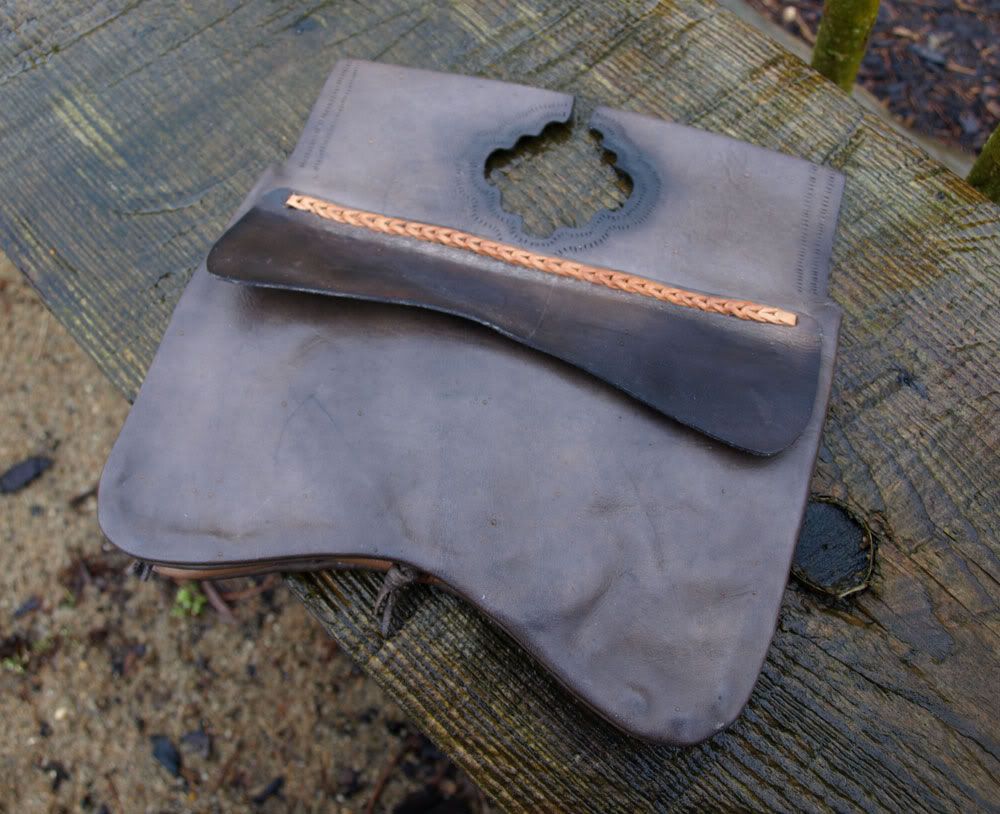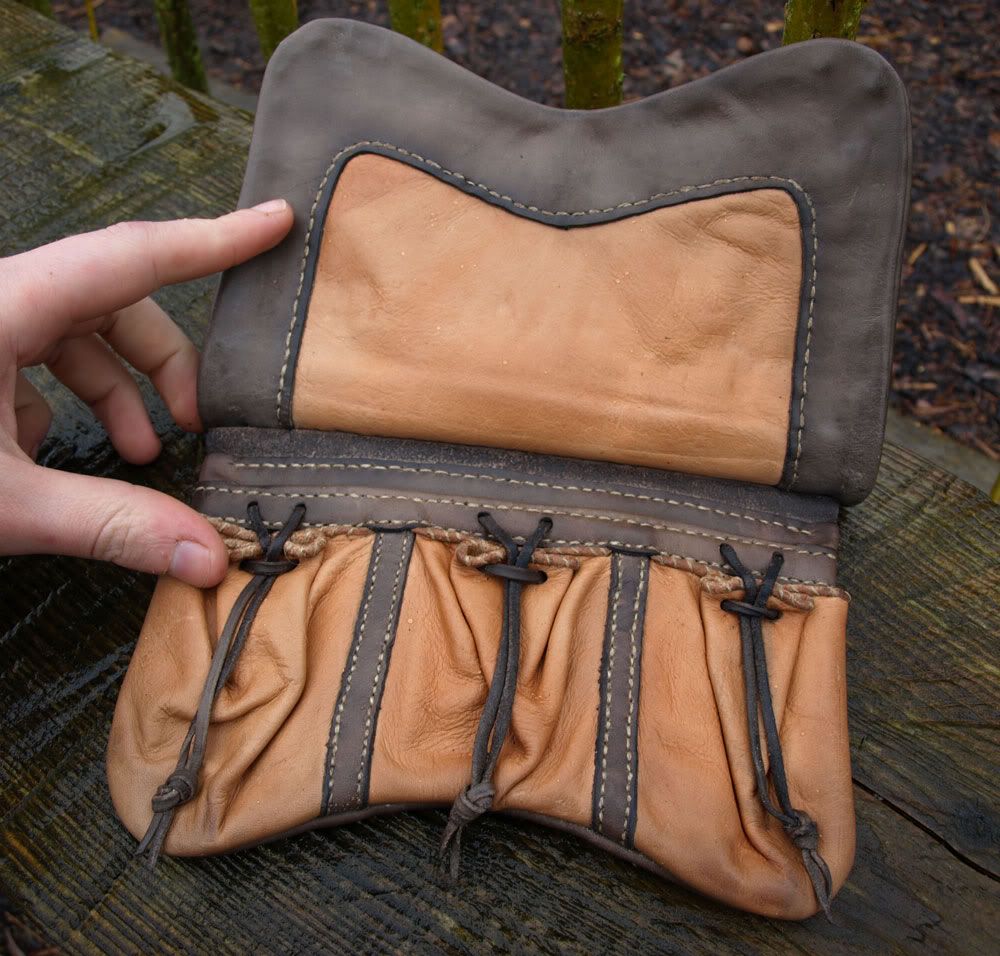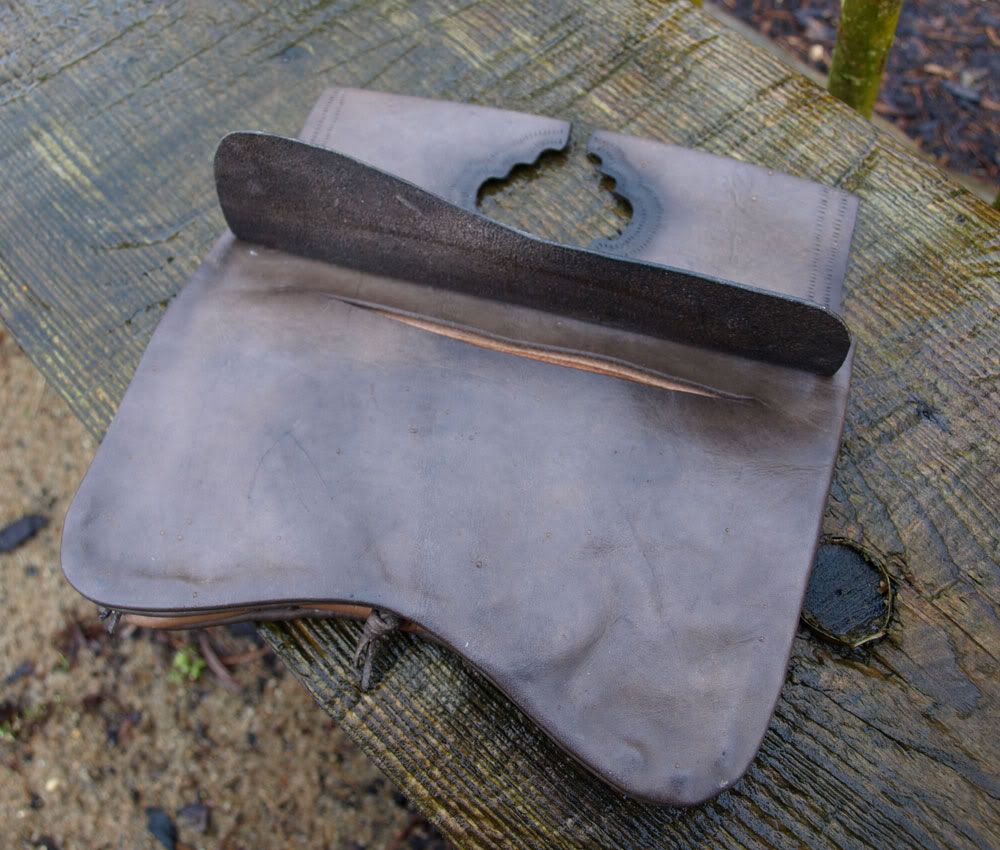This time it´s a find from Nieuwlande (Holland), and based on drawings from "Purses in pieces" by Olaf Goubitz.
I can't supply you with a dating of the purse, as the author does not provide one. All I can say for certain is that it is medieval... Late medieval that is.
I decided to make this one because I really like the stabbed decoration and the shape of the girdle loops (or rather the space between them).

The binding is a typical split seam and the front compartment opens to the front of the purse rather than on the inside.
The leather was coloured using a mixture of iron and oak galls. The result is a nice bronwnish black.
After compleation the purse was greased with a mix of tallow, beeswax and pine tar. This gaves the purse a pleasant smokey odour.

On the inside are 3 small pouchlets.


And here you can see the opening to the front compartment.
The things that weren't preserved from the original are: The binding, the front flap, the pouchlets and the dravstrings.
Therefore these things might not correspond with the original purse. These parts of the purse are therefore based on guesswork - I hope that I have come close.
This is the first of 4 purses that I am currently working on. So there is more to come!

Very nice. How thick is the leather?
ReplyDeleteI'd love to hear more details about your tallow/wax/pine tar mixture. What ratios do you use, is it a period/traditional treatment etc?
I'm assuming the pine tar would make it black so you only apply it to the dyed bits of the leather?
Thanks.
If I remember correctly Nieuwlande was a village in the county of Zeeland and was flushed away by the sea in ca. 1535 or so and the land lost forever.
ReplyDeleteIt is now a protected area and forbidden to go there because too many amateur metal detectorists went searching for nice stuff there at low tide, disturbing the scientific / archaelogical research.
Nice purse!
Thank You Bertus! For that nice piece of info :-)
ReplyDeleteAnd William. The recipe is not from a specific medieval source. I got it from the Historiska-forum.
The tar does colour the leather some... but not very much.
The recipe is something like:
- Fat rendered from ca. 2kg of tallow.
- 50g of beeswax.
- Half a cup of pine tar (any other type will do, as long as it is natural tar).
Melt the fat and beeswax. Add the tar.
Pour it into some sort container and let it cool.
The container should have some kind of lid. Because the tallow will oxidise if left out in the air.
You could also just use pure tallow, but the tar and beeswax works as conservation. The same way as meat is preserved when it is smoked.
it's beautiful!
ReplyDelete